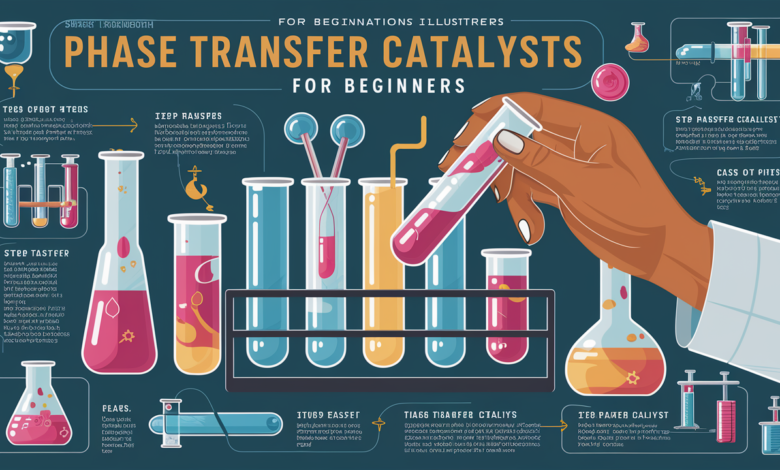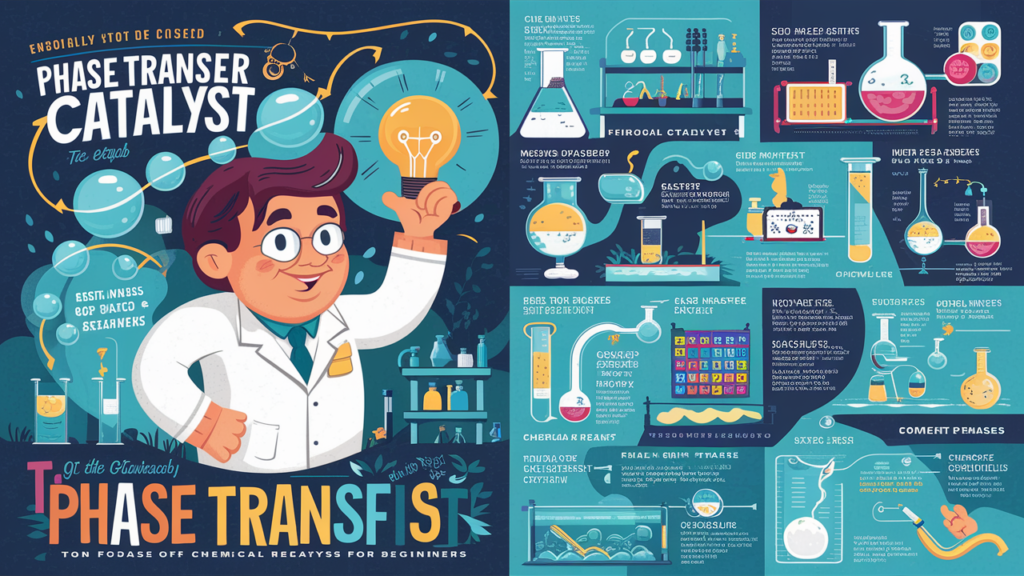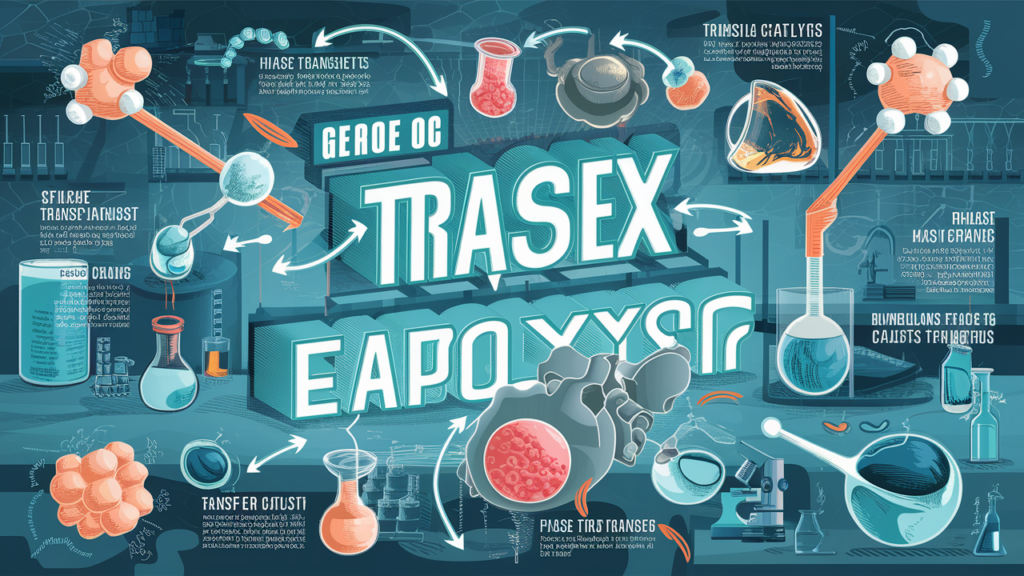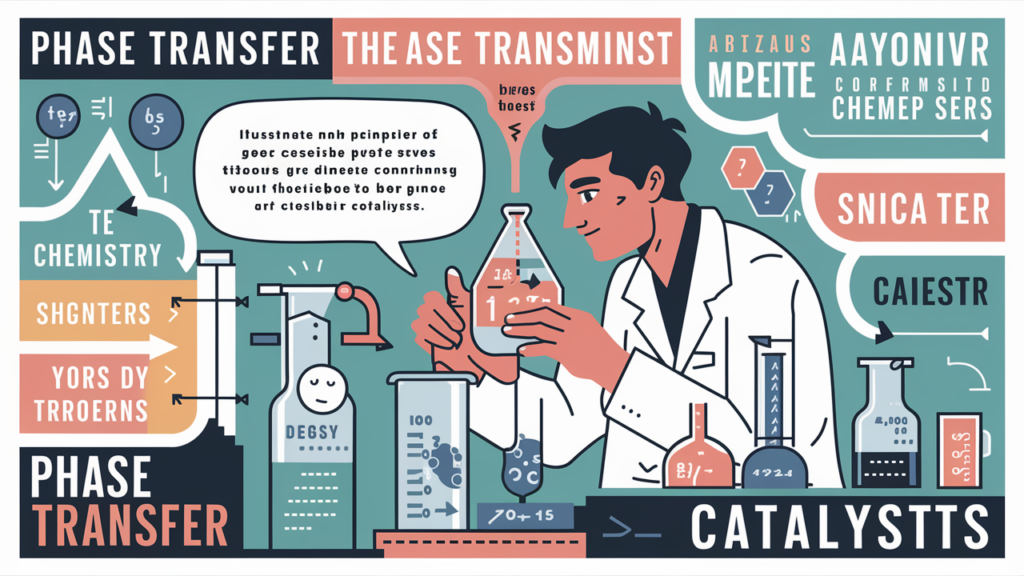Understanding Phase Transfer Catalysts: A Simple Guide for Beginners

A phase transfer catalyst (PTC) plays an essential role in making chemical reactions happen more efficiently. It helps reactants move from one phase to another, like from water to oil, so they can react and create new products. Without a phase transfer catalyst, some reactants can’t mix well enough to react, especially when one is water-soluble and the other is not. Using a PTC makes this process faster and easier.
In industries, phase transfer catalysts are commonly used in making products like plastics and pesticides. They’re important for speeding up reactions while reducing the need for harmful solvents, which is better for the environment. Phase transfer catalysis is also key in green chemistry, helping to make chemical processes safer and cleaner by reducing waste and the use of toxic materials.
What is a Phase Transfer Catalyst and How Does It Work
A phase transfer catalyst is a special type of chemical that helps reactants in different phases mix together, making a reaction happen faster and more efficiently. Imagine you want to mix oil and water. Normally, they don’t mix well, right? A phase transfer catalyst works like a helper, moving the water-soluble reactant into the oil phase, where it can react more easily. Without this catalyst, certain reactions would take too long or might not happen at all.
The catalyst itself doesn’t change during the reaction, which means it can be used over and over again. This makes phase transfer catalysis an important tool in many industries. It helps manufacturers create everything from plastics to medicines without using a lot of harmful chemicals or wasting resources. So, in short, a phase transfer catalyst is like a bridge that connects two different worlds, allowing chemical reactions to happen where they wouldn’t normally take place.
The Role of Phase Transfer Catalysts in Green Chemistry

Green chemistry focuses on creating chemical processes that are better for the environment. A phase transfer catalyst plays an important role in this by making chemical reactions cleaner and more efficient. For example, instead of using harmful solvents that can pollute the environment, a phase transfer catalyst can help use water or other safer materials as solvents. This reduces the amount of toxic waste produced during chemical processes, making the process more sustainable.
In addition, phase transfer catalysts help reduce the need for high-energy processes. This means less electricity is used, and fewer greenhouse gases are released into the atmosphere. For companies that want to operate in an environmentally friendly way, using phase transfer catalysts is a smart choice. It’s one of the many tools in green chemistry that helps us protect the planet while still making the products we need.
Benefits of Using Phase Transfer Catalysts in Industrial Applications
In the industrial world, time and resources are always limited, so finding ways to make processes more efficient is important. Phase transfer catalysts offer several benefits that help in this regard. First, they improve the efficiency of reactions by allowing them to happen faster and at lower temperatures. This means manufacturers can save energy, which is not only good for the environment but also for their bottom line.
Another benefit of using phase transfer catalysts in industrial applications is that they help reduce waste. Because the catalyst makes reactions more efficient, there’s less leftover material that needs to be disposed of. This helps reduce the environmental impact of the process. Additionally, phase transfer catalysts are often used in the production of fine chemicals and pharmaceuticals, where purity and precision are critical. In these cases, the catalyst helps ensure that the right reaction occurs without unwanted side reactions.
Why Phase Transfer Catalysts Are Important for Eco-Friendly Chemistry

Eco-friendly chemistry is all about creating processes that have a smaller impact on the environment. Phase transfer catalysts are crucial in this area because they allow chemical reactions to happen more efficiently without using harmful solvents or generating waste. For example, instead of using toxic chemicals, a phase transfer catalyst helps use safer alternatives, such as water or biodegradable solvents, which is much better for the planet.
These catalysts also help lower the energy needed for chemical reactions. Using less energy means fewer carbon emissions and a smaller carbon footprint. As industries continue to look for ways to reduce their environmental impact, phase transfer catalysts are an important tool that helps them meet their sustainability goals. They provide an eco-friendly solution that allows for chemical reactions to happen quickly and cleanly.
Types of Phase Transfer Catalysts and Their Applications
Phase transfer catalysts come in many different types, and each type has a specific use depending on the reaction. Some are solid, like zeolites, while others are liquids or even liquids that form micelles (tiny structures that help mix different substances). These catalysts can be used in a wide range of reactions, including the production of polymers, pharmaceuticals, and agrochemicals.
The most common types of phase transfer catalysts include quaternary ammonium salts and crown ethers. Quaternary ammonium salts are often used for reactions involving ionic compounds, while crown ethers are better suited for reactions with metal ions. The choice of catalyst depends on the nature of the reactants and the type of reaction needed. In all cases, the goal is to make the reaction happen faster and more efficiently.
Phase Transfer Catalysts vs. Traditional Catalysts: What’s the Difference
While traditional catalysts are useful in many chemical reactions, phase transfer catalysts offer some unique advantages. Traditional catalysts often work in just one phase, like in a liquid phase, but phase transfer catalysts can work across different phases, such as from water to oil. This ability to bridge different phases makes them more versatile for certain types of reactions.
In addition, phase transfer catalysts are often more efficient than traditional catalysts because they can make reactions happen faster and at lower temperatures. Traditional catalysts might require harsh conditions, which can be costly and environmentally harmful. Phase transfer catalysts, on the other hand, work under milder conditions, making them a better option for eco-friendly processes. This difference in how they function makes phase transfer catalysts a valuable tool in many modern chemical industries.
How Phase Transfer Catalysts Are Used to Create Everyday Products
Phase transfer catalysts play a role in making many of the everyday products we use. For example, in the production of plastics, phase transfer catalysts help speed up the reactions that create polymers. These polymers are then used to make everything from bottles to toys. In the pharmaceutical industry, phase transfer catalysts are used to create important medicines, ensuring that reactions happen efficiently and safely.
Another area where phase transfer catalysts are used is in the production of pesticides. These catalysts help speed up the chemical reactions that create effective and safe pesticides, which are important for protecting crops from pests. So, even though you might not always see phase transfer catalysts, they are an essential part of making many products that we rely on in our daily lives.
The Future of Phase Transfer Catalysts in Sustainable Chemistry

The future of phase transfer catalysts looks bright, especially as more industries move toward sustainable practices. As the demand for eco-friendly processes grows, phase transfer catalysts will become even more important. Researchers are constantly looking for new types of catalysts that can work in different conditions and with a wider range of reactions. The goal is to create even more efficient catalysts that can help reduce the environmental impact of chemical processes.
In the coming years, we can expect to see more applications of phase transfer catalysts in industries like renewable energy, where they can help improve the efficiency of processes like biodiesel production. As technology advances and sustainability becomes more of a priority, phase transfer catalysts will continue to play a key role in making chemistry safer, cleaner, and more efficient for the planet.
Conclusion
In conclusion, phase transfer catalysts are a crucial part of modern chemistry. They help reactions happen faster and more efficiently by allowing different substances to mix, even if they are in different phases, like water and oil. These catalysts make chemical processes more eco-friendly by reducing the need for harmful solvents and minimizing waste. Whether in the production of plastics, pharmaceuticals, or pesticides, phase transfer catalysts are used to make everyday products that we rely on.
Looking ahead, the role of phase transfer catalysts in sustainable chemistry will only grow. As industries continue to seek cleaner, more efficient ways to make products, these catalysts will be essential for achieving greener and more eco-friendly chemical processes. By making chemical reactions happen faster, at lower temperatures, and with less waste, phase transfer catalysts will continue to support the push for a more sustainable future.
FAQs
Q: What is a phase transfer catalyst
A: A phase transfer catalyst helps reactants move between different phases, like water and oil, to speed up chemical reactions. It makes reactions happen faster and more efficiently.
Q: Why are phase transfer catalysts important for green chemistry
A: They make chemical reactions more eco-friendly by reducing the need for harmful solvents and cutting down on waste. They also help lower energy consumption.
Q: How do phase transfer catalysts work
A: They help substances dissolve in the right phase so that reactions can take place. For example, they help water-soluble substances move into oil, where the reaction can occur.
Q: Can phase transfer catalysts be reused
A: Yes, phase transfer catalysts are not consumed in the reaction, so they can be used multiple times. This makes them more cost-effective and environmentally friendly.
Q: Where are phase transfer catalysts used
A: They are used in industries like plastics, pharmaceuticals, and agriculture to speed up reactions and improve efficiency in making products like medicines, plastics, and pesticides.





